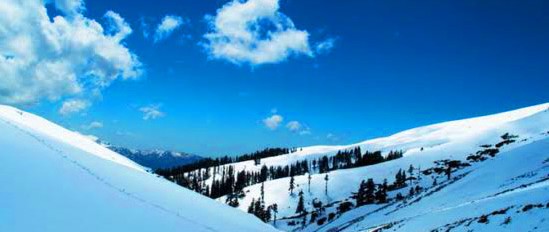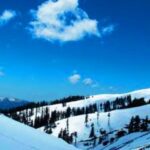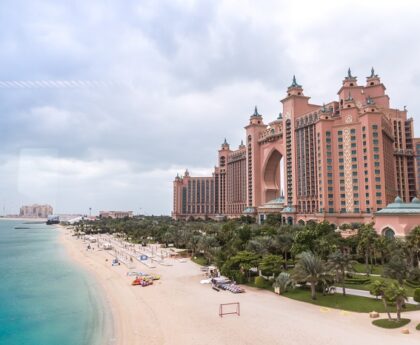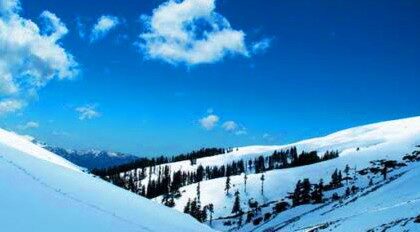The next Rupin Pass trek will start on June 5, 2022.
Rupin Pass trek is an excellent option for a summer hike at a high altitude. The Baspa valley in Kinnaur is connected to the Garhwal in the south by several passes. These passes were once used by traders and shepherds rather than the current circuitous Hindustan–Tibet road.
It offers a wide variety of terrain, altitude, and gradient. Govind National Park is where the trek starts (Govind Vanya Pashu Vihar). It passes through Fir and Oak forests and interior villages at lower elevations in the river valleys.
The trail crosses beautiful meadows (referred to locally as Thach), alpine wildflowers, waterfalls, and steep ice fields. This route is often rich in wildflowers, especially after the monsoon. The famous Brahma Kamal thrives in the area surrounding the pass.
Rupin Pass Trek Itinerary:
- Day 1: Drive Dehradun-Dhaula – 200 miles by automobile – 10 hours
- Trek to Sewa on Day 2 (10 Km) – Duration: 5 to 6 hours
- 3rd Day: Trek to Jhaka (12 Km) – 6 Hours and 7 Minutes
- Day 4 – Buraskandi Trek (7 km, 5 hours)
- Day 5: Trek to Dhanderas Thatch, Lower Waterfall (6 km, 4 hours)
- Day 6 – 5 km/4 hr trek to Rati Pheri/Upper Falls
- Trek to Sangla Kanda on Day 7 – 12 km – 8/9 hours – Rupin Pass
- Day 8 – Sangla Trek (4 km, 2 hours)
Altitude profile graph for Rupin Pass Trek:
The distance and altitude of major spots along the Rupin Pass Trek path are graphically shown here.
- Rupin Pass Trek: Best Time/Seasons
Rupin Pass trek, like all high-altitude Himalayan treks (except a few trans-Himalayan outings), can also be done in two seasons. The first is in the summer before the monsoon, and the second is in the fall.
Summer (May/June). Beginning in May and ending at the end of June. Due to the winter snow, expect heavy to moderate snow. Snow will be available from the lower waterfall camp in small amounts and above.
Post monsoon, Sep/Oct: This window is traditionally the best for high-altitude passes on the Himalayas. Monsoon weather is clear and almost haze-free. September is generally greener, and the meadows (called Thatch by local language) will be at their best. Monsoon is when many flowers are in bloom, and they last until September.
The highest rocky ridges are where the most revered Brahma Kamal flowers. كيف تربح المال من النت The grass will turn golden from October and become colder. There will also be fresh snowfall at high altitudes above 14000 feet. This season is preferred by experienced hikers who have been on snow treks before and don’t have any particular snow-loving preferences.
- Rupin Valley, its culture and people:
Rupin pass trail follows the Rupin river to Dhaula. Rupin forms Tons River, the Yamuna’s primary tributary, at Dhaula Supin. You will see its twists and turns as you follow it upstream.
The trail also crosses the very inner villages of Uttarakhand (upto Sewa village) and towns of Himachal, Jakha, and Jiskun. شراء يانصيب اون لاين Their architecture and their attires are very similar to that of Kinnaur. Most of Jaka and Jiskun’s residents are Satsangi religious sects and pure vegetarians.
- Access to Rupin pass trekking base (Dhaula).
Depending on your request, we will arrange pick-up and drop-off from Dehradun to Dhaula; The team members will split this cost on a factual basis. The driver/transporter will be paid directly. One-way Tata Sumo/Mahindra Maxx/Bolero fare: Rs. 6000 It can carry 6-8 people. Tempo Travellers charge Rs 9000 per person (12-14 seats) for one-way. This fee is not included in the TREK FEES.
When you return from Sangla, you have two choices. Take an overnight bus to Shimla at 5 p. قوانين الروليت m. or an 8 a.m. bus the next day. The 235 kilometre trip will take around 10 and 12 hrs to accomplish. Buses run frequently between Shimla and Chandigarh or Delhi.
Return from Sangla (trek endpoint) to Shimla/Chandigarh/Delhi:
Sangla is the end of the Rupin pass trek, and Sangla Kanda is the best place to start your return journey. While some trekkers return to their original destination in the same evening, others spend the night at Sangla. Chitkul is the final village in the Baspa valley, located 25 kilometres above Sangla. These are some of the options you have:
1) A state transport HRTC bus operates from the morning/evening (4/5 pm) and arrives in Shimla in 10/12hrs. Buses to Chandigarh or Delhi will depart from the same bus stop. They’ll take about 4 and 9/10 hours to complete, respectively.
2) If you want to stay the night in Sangla (where there is a large selection of lodging alternatives), you may catch the HRTC bus for Delhi around 6:00 a.m. (ISBT Kashmiri Gate). It will take approximately 18/20 hours.
3)Trekkers may take a vehicle reserved from Sangla to Shimla on either Day 8 or 9 mornings. The team will assist you in obtaining one. The cost of a Tata Sumo is approximately 7000 – 8000 Rs.





